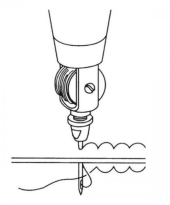Good morning
I'm going to build some cabinets for our self-built home. Over the last few weeks I've been cleaning my shop and organizing tools.
Getting warmed up I've refurbished my old Craftsmen Table-saw. Rebuilt a table belt - disk sander.
Some smaller projects are getting done too, such as putting new handles on garden tools.
I've neglected our hand tools being ill for three or so years.
So far I've supplied one two forged-blade hoe with a new handle.
I'm still working on making a handle for an eye-hoe where the handle sets like a pick handle.
I'm having the time of my life tinkering in the shop as I'm getting it organized and projects are coming out better as more of the old tools come on-line.
Thank goodness for the Interweb for forums like Permies and Youtube where I can read and see videos on woodworking.
Learning about joinery and old style cabinet construction thrills me to no end.
Yesterday I found a link to a valuable book on a video from Kingpost TimberWorks
Ye olde-book
Cassells Carpentry and Joinery
Boy Howdy! This type of carpentry is so cool and shall fit nicely into my low-budget permaculture and continuing homesteading retirement plan!
There are so many types of joinery I never knew about
Some Joints WOW!
Yesterday I rebuilt an old stereo and replaced the speakers from a supply stash, so now I have tunes in the shop! Yay, another skill comes back to life.
Last evening I began work on restoring a unique dining table with leaves that tuck up underneath for storage. Unfortunately, the glue joints on the maple top are randomly coming apart.
It looks like the top is made from 3/4" by 2" maple strips of which several joints have come un-glued.
I thought about running the top over the table-saw once I can get a finer 80 tooth blade for it. That was before I realized how many joints there are. I can see the skill of the carpenter in the joinery because I couldn't see the quantity of joints, but Ye Olde glue failed.
With all the cut-outs for the hardware underneath the table-top for the "pocket-leaves" sawing the joints out would change the spacing.
So last night I secured the table top to a bench and popped the partially loose joinery with a small mallet to crack it apart. It worked well on the first piece, but the second time instead of the glue joint cracking, it cracked in a new place, darn it.
I glued the cracked piece which looks okay now, he says meekly.
I chose this project to start with because the condition of the table-top is so bad anything I accomplish will be good. As long as I don't make it worse, right?
It still has a few joints near the edges where the joints are loose. Suggestions are so very welcome.
Today I need to go in the forest around our house and locate rotting logs for the Huglekultur berm next to our little spa conversion Koi pond. I'll also gather rotting pine needles for the berm as well as for our gardens. I think pine-needles are the most economical form of mulch for us here. The last time I bought straw it sprouted into a carpet of wheat, which may be a good thing for mulch, I don't know but I'm learning more as I read here at permies.com about soil regeneration. Suggestions welcome on the mulch too. Thank you thank you.
Brian












